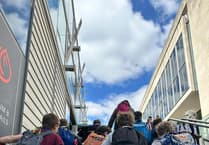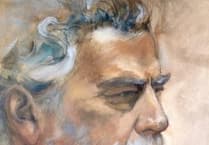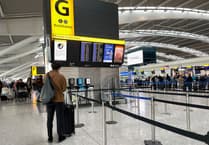A village has been honouring the servicemen who gave their lives in two world wars – by ensuring they do not remain just faceless names on a memorial.
Every year on Remembrance Sunday the names of the 10 men who died in the First World War and the four who died in the Second are read out as part of the Blackawton ceremony.
But with the 100th anniversary of the start of the Great War just around the corner, local historian James Mussem decided it was time find out about the men behind the names.
Like Lambert Bond, whose father was a poultry and cattle farmer in Blackawton, who died of wounds in Mesopotamia in 1916 aged just 23.
And Frederick Bowhay, an apprentice carpenter who joined up as a cook's mate on board HMS Defence and died alongside all 893 crew members when the heavy cruiser went down in the Battle of Jutland in 1916.
And William Leat, the son of a Blackawton rabbit trapper – one of seven children – who was a chief stoker on board HMS Dorsetshire when she was sunk by a Japanese bomber in 1942. William was listed as missing presumed dead. He was 43 years old.
Samuel Hodge and William Hodge are both listed among the First World War casualties and were almost certainly related, said Mr Mussem, although he has not been able to track down just how.
Both were killed in action on the Western Front in Flanders just six months apart while serving with the Devonshire Regiment.
Samuel's father was born in Harberton and worked as a grocer and wagoner living in Dartmouth. Samuel was 27 when he was killed in action in March 1916.
William was even younger when he died. He was just 21. He had been working as a farm labourer at Washbourne and was probably lodging at the post office in Blackawton when he joined up. He was killed in August 1916.
Blackawton's war memorial, sited in the village's main street between the two village pubs, was probably put up soon after the 1918 armistice. It bears 14 names but does not even include their Christian names or their military units.
Mr Mussem, who is a founder member of the Blackawton and Strete History Society, explained the thinking behind his research.
'The names are read out each year on Remembrance Sunday but they didn't really mean anything to anyone,' he said.
'I thought it would be good if we could find out a bit more about these people, who they were and where they lived in the village.'
The job proved tougher than he expected because while he was able to access some records, a lot of the information proved to be 'pretty sparse'.
'Most of them were teenagers and privates from quite lowly backgrounds. The sad thing is there are few families of the casualties who are still around in the village. I have not been able to find any local people who could add personal details – which would have been nice. It is possible that there is information still out there that I have yet to find.'
He said that one of the problems may have been that Blackawton was one of the South Hams villages evacuated in 1943 to make way for the US Army's training for D-Day.
Some of those people simply did not come back,' said Mr Mussem who lives near Halwell.
A hard copy of what he has so far discovered has been placed in the village church.
The 14 names on the village war memorial are – First World War: Lambert Anthony Bond, Frederick Samuel Bowhay, Stephen Cyril Dimes, Samuel Ernest Hodge, William Hodge, Frederick Joint, Frederick Lamble, Harold Nicholls, Francis John Sercombe and Arthur Ernest Yabsley. Second World War: William Richard John Leat, William George Henry Marley, Hubert Samuel Charles Palfrey and Ronald West.
Mr Mussem is still researching more information about the Blackawton men who died in both wars and anyone who can help can contact him on 01803 712260 or mussen @lower-collaton-farm. co.uk.




This article has no comments yet. Be the first to leave a comment.